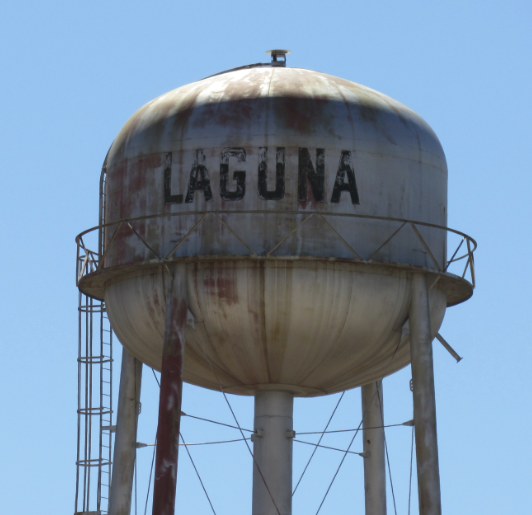
- Details
- By Levi Rickert
The U.S. Environmental Protection Agency (EPA) on Wednesday announced that over $278 million in funding to improve access to safe and reliable drinking water and wastewater services has been granted to Indian Country.
The announcement was made at an event at the Lummi Nation in Bellingham, Washington by (EPA) Assistant Administrator for Water Radhika Fox.
“For too long, Tribes have struggled without access to basic water services—impacting their health and economic well-being. Today’s funding announcement is a generational investment that moves us closer to achieving a future where all Tribes have access to safe drinking water and wastewater services,” Fox said.
The water funds were made possible through the bipartisan infrastructure law. Fox told Native News Online in an interview that President Biden made a commitment to maintain a nation to nation relationship with tribes.
“He's made a commitment of this administration to focus on strengthening the nation to nation relationship with tribes. And that's happened in several ways, including receiving the historic amount of dedicated funding for tribal water for American Indians and Alaska Natives,” Fox said.
The funding will help Tribes and Alaska Native Villages make significant investments in water infrastructure improvements to advance public health protections by improving compliance with existing water regulations, identifying, and replacing lead service lines, and addressing harmful emerging contaminants in drinking water and wastewater, such as per- and polyfluorinated substances (PFAS).
The funding will be administered through the following programs:
- $64 million in FY 2023 Clean Water Indian Set-Aside (CWISA) through the Bipartisan Infrastructure Law and annual appropriation funds;
- $130.3 million in FY 2023 Drinking Water Infrastructure Grants through the Bipartisan Infrastructure Law and annual appropriation funds;
- $38.6 million in combined FY 2022 and FY 2023 Emerging Contaminants in Small or Disadvantaged Communities (EC-SDC) Tribal Grant Program through Bipartisan Infrastructure Law funds;
- $5.6 million in combined FY 2022 and FY 2023 Small, Underserved, and Disadvantaged Communities (SUDC) Tribal Grant Program through annual appropriation funds, and
- $39.6 million in FY 2023 Alaska Rural and Native Villages (ANV) Grant Program through annual appropriation funds.
The EPA works in collaboration with Indian Health Service (IHS) in water management in Indian Country.
Fox said the EPA is focused on providing technical assistance to tribal communities to build their technical, financial, and managerial capacity.
“So we're also investing in a range of technical assistance to support tribal communities to not only access these funds, but also to be able to access state revolving loan fund dollars and other investment vehicles as well,” Fox said.
Earlier this year, EPA released a survey of drinking water needs in Indian Country. The results indicate that in excess of $4 billion is needed over the course of the next 20 years to bring adequate drinking water to Indian Country.
"We know that today's announcement has an important step. But our work won't stop there. We are going to continue to push for additional funding," Fox said.
More Stories Like This
Trump signs law that revokes some limits on drilling in Alaska’s National Petroleum ReserveSouthern Sierra Miwuk Nation Gets 900-Acres ofLand Back
Chilkat Indian Village Tells New Palmer Mine Owners They Are “Not Welcome” in Chilkat Valley
Tribes, Coastal Group Ask Army Corps to Revoke Permit for Texas Export Terminal
Michigan Tribes Tell Supreme Court: Don’t Bail Out Enbridge
Help us defend tribal sovereignty.
At Native News Online, our mission is rooted in telling the stories that strengthen sovereignty and uplift Indigenous voices — not just at year’s end, but every single day.
Because of your generosity last year, we were able to keep our reporters on the ground in tribal communities, at national gatherings and in the halls of Congress — covering the issues that matter most to Indian Country: sovereignty, culture, education, health and economic opportunity.
That support sustained us through a tough year in 2025. Now, as we look to the year ahead, we need your help right now to ensure warrior journalism remains strong — reporting that defends tribal sovereignty, amplifies Native truth, and holds power accountable.
 The stakes couldn't be higher. Your support keeps Native voices heard, Native stories told and Native sovereignty defended.
The stakes couldn't be higher. Your support keeps Native voices heard, Native stories told and Native sovereignty defended.
Stand with Warrior Journalism today.
Levi Rickert (Potawatomi), Editor & Publisher


